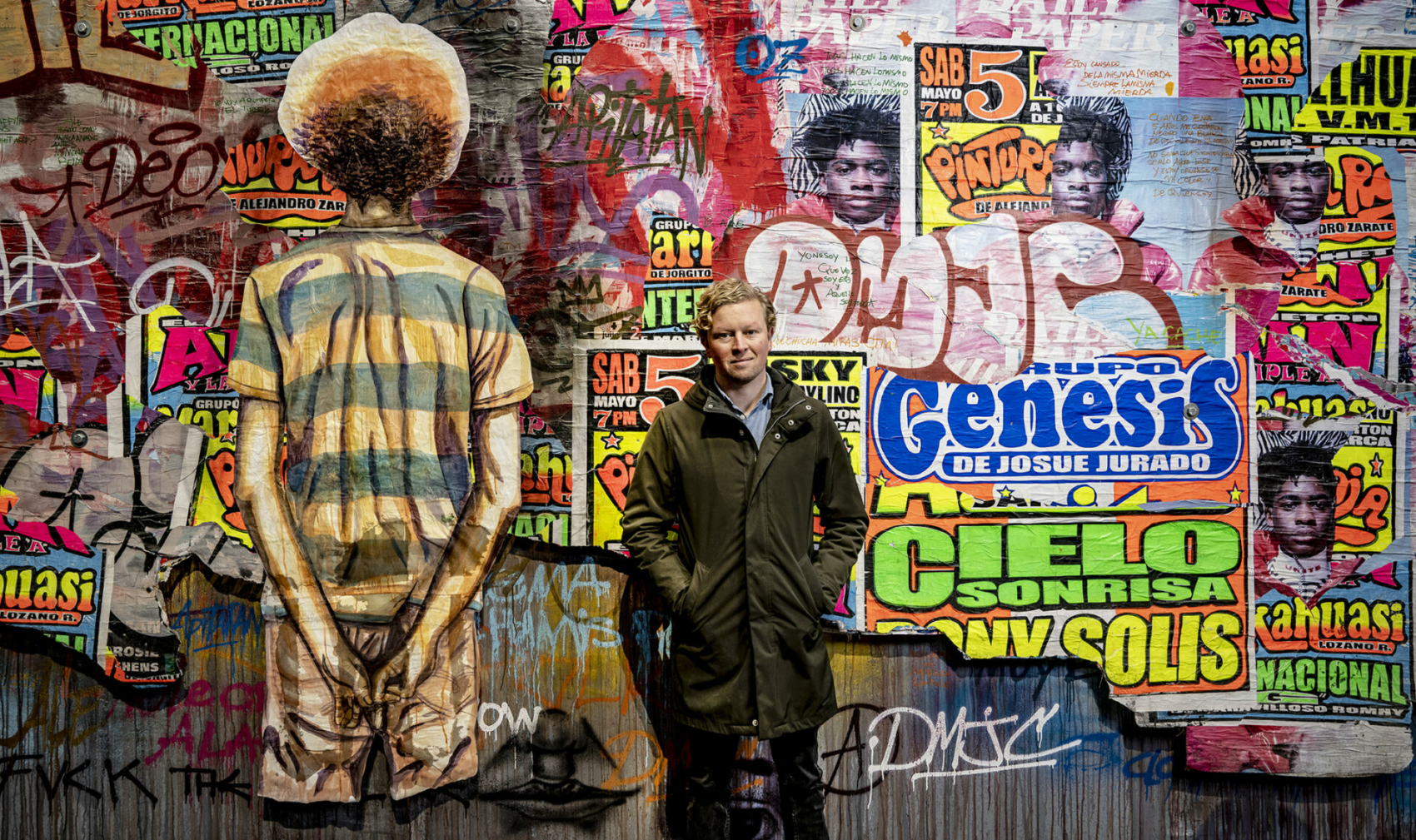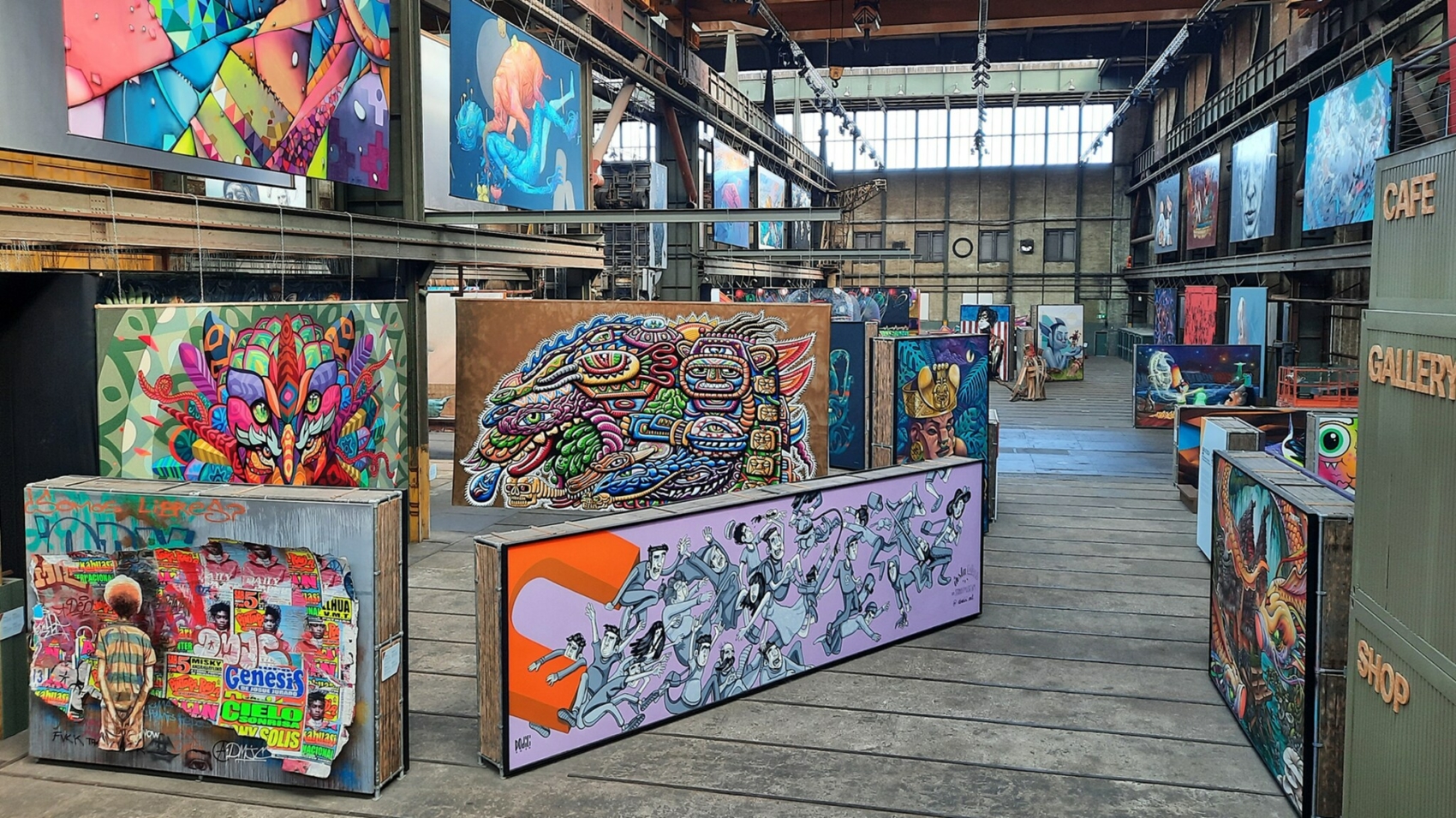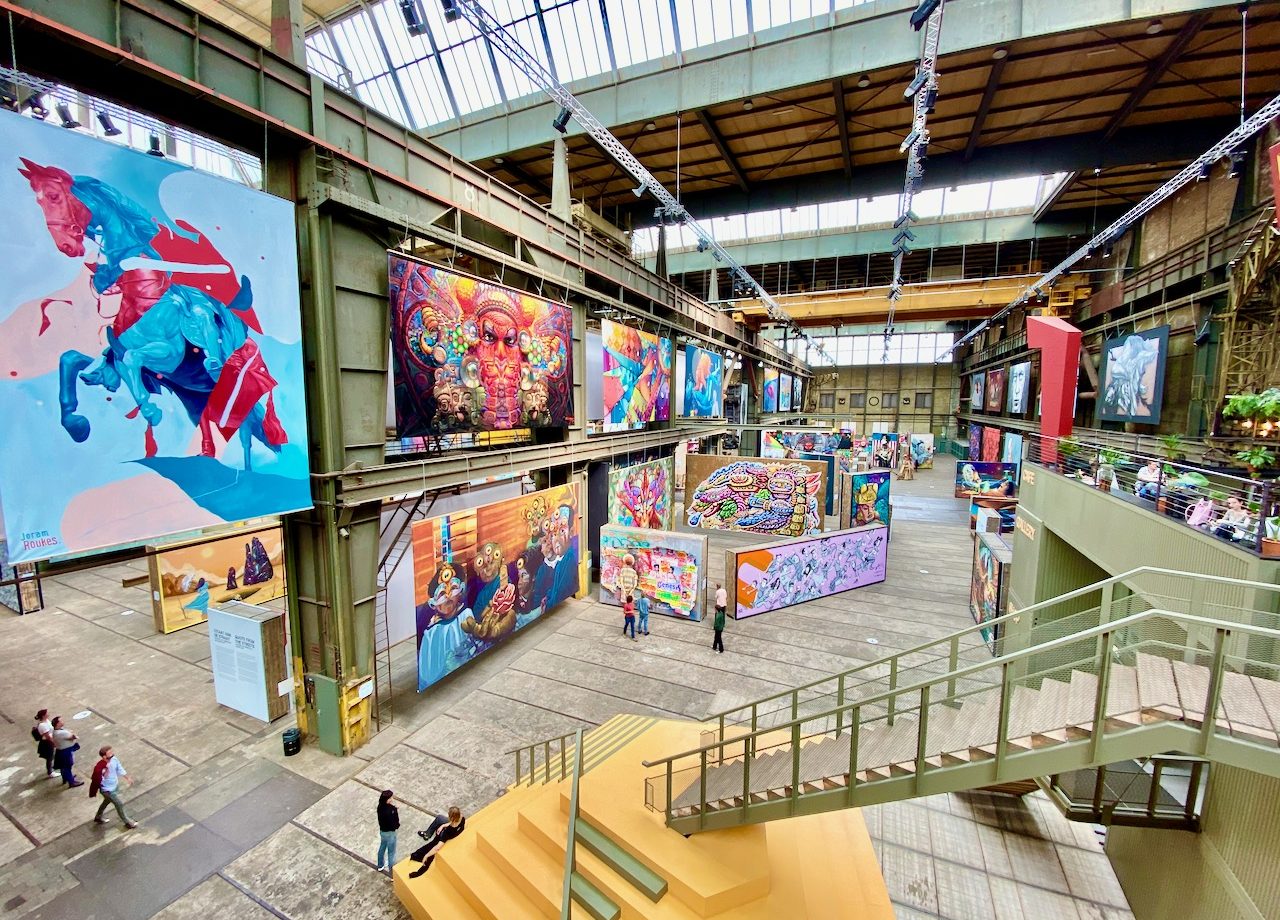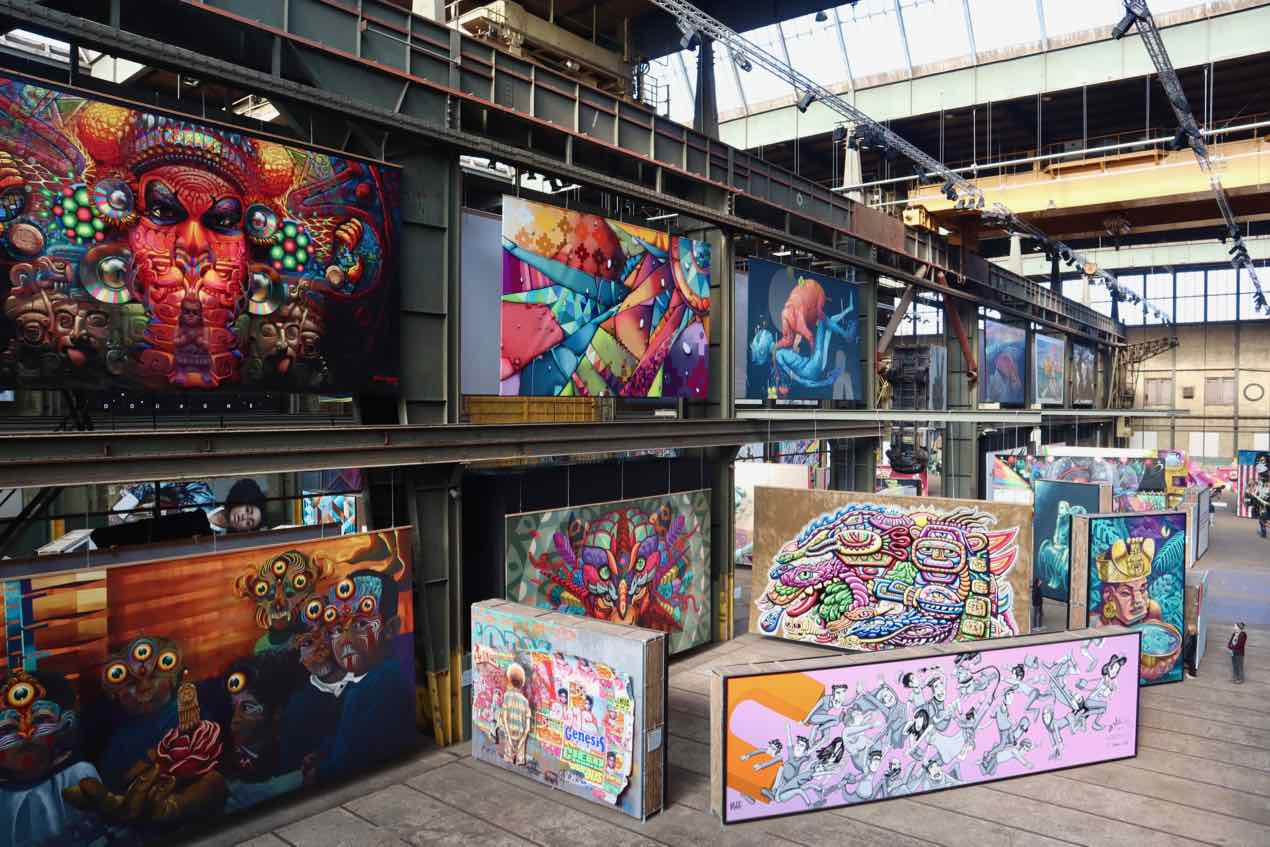STRAAT, the world’s biggest street art museum
Gehuisvest in een imposant nationaal monument – de 8.000 m2 grote Lasloods van de NDSM-werf in Amsterdam Noord – bestaat de permanente collectie van STRAAT Museum uit meer dan 160 kunstwerken van meer dan 130 internationale, street art en graffiti-artiesten.
Since its opening in October 2020, STRAAT, the world’s biggest museum for street art and graffiti, has made it its mission to showcase the diversity of talents, backgrounds and stories of what can rightfully be called one of the century’s leading art forms.
Hello Amsterdam spoke with STRAAT’s curator and creative director, David Roos, who developed a keen interest in street art while studying international health in Berlin. Roos started capturing images of the artworks, posting them on Instagram and acquiring an impressive following. Meeting with a wide variety of artists and being immersed in the street art scene, set the stage for turning his passion into his career.

How do you choose which artists to work with?
Initially, everything was very much improvised, but we are now working with an actual plan to bring shape to the different quarters of the museum. For example, one of our quarters focusses on political and social themes, creating awareness of the problems that are going on in the world. This social aspect is one of the pillars of street art. We now also have a section that shows how artists have been inspired by the Netherlands or Amsterdam. It draws links to Dutch culture, such as noteworthy buildings, food and old masters.
My aim is to represent the whole street art scene and highlight its diversity, which is why I want to include more women artists and people from different backgrounds. But it’s also important to feature some of the great artists we have in the Netherlands. About 20% are Dutch. I think this reflects the scene quite well.

How does exhibiting street art inside a building still honour the art form?
Our massive, industrial building plays a big role in this. You don’t really have the feeling you’re indoors anyway, and the canvasses are all the size of outdoor walls. The artists use the same techniques and materials as they would outside, including scaffolding and lifts. We give them full creative freedom to do whatever they want, so it’s pretty much what you would see on the streets. The only difference is that at the museum, artists are given a platform and we make sure that their work is preserved. It doesn’t get painted over, as it would on the streets. The fact that most of the artworks were created on-site (with the exception of a few pieces that were donated to the museum) means that visitors can actually witness how they come to life and even chat with the artists, who are happy to explain the actual process. I really think this adds value to the overall experience. It makes this art form, which is currently booming, more accessible.
STRAAT is a great addition to the museum experiences that we have in Amsterdam. Showing street art this way does away with the taboo of it being just a rebellious art form and emphasises how rich its history truly is.

What is the best way to experience STRAAT?
I would suggest you take at least a few hours. I walk around the museum a lot and notice how people really take their time. Some spend at least four or five hours here, stopping at the café for a drink or lunch and then continuing their visit. It’s also a great idea to visit more often in order to get the chance to fully immerse yourself in the artworks.
Is there a particular piece you would like to highlight?
Care Portal, an interactive piece by Jad El Khoury. It’s an actual rusty, bullet-ridden shutter left from the civil war in Lebanon. We brought it to Amsterdam and have asked visitors to write messages of hope and love for people living in war zones on coloured post-it notes which they can place in the holes. The notes will be sent to artists in these war zones, who will pick out keywords to depict on walls there. These works will be photographed and showcased at a photo exhibition in STRAAT next year.
The street art scene involves so much more than painting walls. From sculptures to installations, at STRAAT, we really try to focus on every aspect of this diverse art form.


WONDR Experience
Posing in front of your own phone lens, duck-faced with two fingers in the air, you make the…
North



















